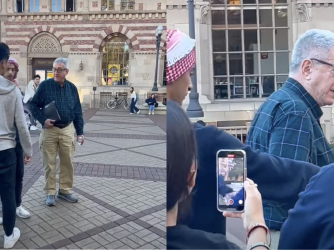Table of Contents
Shouting down speakers is mob censorship: Part 14 of answers to arguments against free speech from Nadine Strossen and Greg Lukianoff
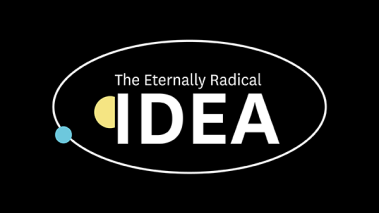
In May 2021, I published a list of “Answers to 12 Bad Anti-Free Speech Arguments” with our friends over at Areo. The great Nadine Strossen — former president of the ACLU from 1991 to 2008, and one of the foremost experts on freedom of speech alive today — saw the series and offered to provide her own answers to some important misconceptions about freedom of speech. My answers, when applicable, appear below hers.
Earlier in the series:
- Part 1: Free speech does not equal violence
- Part 2: Free speech is for everyone
- Part 3: Hate speech laws backfire
- Part 4: Free speech is bigger than the First Amendment
- Part 5: You can shout ‘fire’ in a burning theater
- Part 6: Is free speech outdated?
- Part 7: Does free speech assume words are harmless?
- Part 8: Is free speech just a conservative talking point?
- Part 9: Free speech fosters cultural diversity
- Part 10: Why 'civility' should not trump free expression
- Part 11: ‘New’ justifications for censorship are never really new
- Part 12: Free speech isn’t free with a carveout for blasphemy
- Part 13: Does free speech lead inevitably to truth?
- Part 14: Shouting down speakers is mob censorship
Assertion: Shoutdowns/heckler’s vetoes are an exercise of speech rights, not censorship
Note: this answer refers to and assumes situations where audience members have attempted to shout down events and keep them from proceeding, as opposed to brief heckling that is itself protected speech. My colleagues at FIRE will be writing on how to distinguish protected brief heckling from unprotected heckler’s vetoes/substantial event disruption in the near future.
Greg Lukianoff: This argument has been all over Twitter in recent weeks, following incidents where members of the audience shouted down speakers at UNT, UC Hastings, and, most recently, Yale.
The university is meant to be a place of uniquely open minds, where ideas — even wrong and offensive ones — are interrogated.
Shouting down a speaker to stop an event from proceeding is mob censorship, full stop. It gives the shouters the power to dictate what anyone else is able to say or to hear. The idea that a group — or even a single individual pulling a fire alarm or banging a cowbell — can decide what others can and cannot listen to is incompatible with pluralism. It replaces the free exchange of ideas with a system of “might makes right,” and it is especially egregious for this to happen in the university context where the free exchange of ideas and the freedom to seek out any information is most important.
This is so obvious that, I believe, those who make this argument either do so in bad faith, or have not thought through the implications of this position. For example, no one would argue that one has a right to go to a university orchestra concert and play electric guitar from their seat. It is equally hard to imagine that those sympathetic to shout-downs at Yale and Hastings would make the same argument if, for example, a pro-choice speaker was shut down by rowdy pro-life protestors, or if a student shouted down his professor for the duration of class. And yet all of these examples logically follow from the asserted free speech “right” for some audience members to take over an event.
In each of these cases, a government or university administrator stepping in to stop the individual or mob from dictating what can be said reflects a positive duty to protect freedom of speech. The necessity of free speech, and, in particular, the ability to voice unorthodox and unpopular views on a college campus, is something that I have written about so frequently and at such length, I will attempt to be brief here.
The university is meant to be a place of uniquely open minds, where ideas — even wrong and offensive ones — are interrogated. As I wrote in the previous part of this series:
Indeed, scholarship at its best is supposed to be a process of arguing, testing, researching, re-arguing, retesting all to — via subtraction (a.k.a. via negativa) — eliminate a larger and larger number of false assertions. While in everyday life among many people matters of preference and emotional state may be primary topics of discussion, the project of higher education is to help us understand what ideas may be false by aiming toward a “better approximation of the truth,” even if we never arrive there.
This process is short-circuited when some — through shouting, noisemakers, or fire alarms — prevent others from speaking and being heard by those who wish to hear them. Those who shut down events through disruption don’t just deprive listeners who agree with the speaker from hearing speech: They also deprive those who disagree and want to interrogate the viewpoint with pointed questions, and those who want to listen with scholarly detachment to learn more about the view being expressed.
It’s especially galling for this to occur at a law school — the work of lawyers requires being able to argue effectively against opposing viewpoints. And responding effectively to opposing viewpoints first requires hearing them out.
It’s not just the right to speak that is at issue in these cases. Justice Marshall pointed to a corresponding right to hear in his dissent in Kleindienst v. Mandel:
[T]he right to speak and hear — including the right to inform others and to be informed about public issues — are inextricably part of that process. The freedom to speak and the freedom to hear are inseparable; they are two sides of the same coin. But the coin itself is the process of thought and discussion. The activity of speakers becoming listeners and listeners becoming speakers in the vital interchange of thought is the “means indispensable to the discovery and spread of political truth.”
Justice Marshall was not the first to do so. Frederick Douglass wrote about the right to hear following the shout-down of an abolitionist event he organized in Boston 1860 by outraged members of the public:
There can be no right of speech where any man, however lifted up, or however humble, however young, or however old, is overawed by force, and compelled to suppress his honest sentiments. Equally clear is the right to hear. To suppress free speech is a double wrong. It violates the rights of the hearer as well as those of the speaker. It is just as criminal to rob a man of his right to speak and hear as it would be to rob him of his money.
If you are not persuaded by these philosophical arguments, here is a pragmatic one: If we continue down the path of allowing anyone with the ability to draw a big enough crowd to shut down any speech they do not like, it will have dire consequences for speech that you like. Whatever your political leanings, a shout-down opposite them has almost certainly occurred at some point. Normalizing this behavior and allowing it to go unpunished will incentivize more of it: There will always be parts of the country where it will be easier to assemble a mob opposed to your views than in favor of them.
I believe these shout-downs are often allowed to proceed, go unpunished, or even receive encouragement from administrators because some administrators dislike the particular speech being shouted down. But the bottom line is this: A university that allows — or disallows — speech based on the assumption that “might makes right” is one where speech isn’t really free at all.
Nadine Strossen: Protesters who have disrupted speakers through loud, persistent shouting have argued that such tactics, far from violating freedom of speech, constitute exercises of such freedom.
To be sure, these tactics convey messages — namely, disagreement with the suppressed ideas, and also rejection of the notion that the speaker and audience should have a right to convey and receive these ideas. Yet the Supreme Court rightly has recognized that the sole fact that conduct conveys a message is not enough for it to be treated as “speech” within the First Amendment’s ambit, let alone as speech that is immune from regulation or punishment. Were it otherwise, there would be a First Amendment defense to even the most heinous, harmful violent crimes, including the assassination of a political leader; after all, such assassinations surely convey the murderers’ abhorrence of the victims’ policies.
Ironically, many who assert this expansive concept of protected free speech when they defend speech-suppressive tactics such as shoutdowns assert a much narrower concept concerning the suppressed speech itself. Critics of the targeted speech often proclaim that the speech is “violence,” which has no claim to First Amendment protection. Most ironically, some who attack words as “violence” defend actual physical violence against those who utter such words. Alarmingly, recent surveys indicate that substantial percentages of college students condone physical violence against controversial speakers.
What are the actual First Amendment rights and wrongs in these situations?
Government may prohibit and punish any conduct — including shouting — that interferes with speakers’ and audience members’ exercise of their First Amendment rights.
First, some conduct is sufficiently expressive to be eligible for First Amendment protection. Classic examples include burning a U.S. flag in political protest and marching in a demonstration. To come within the First Amendment’s scope, conduct must both be intended to convey “a particularized message” and have a “great” likelihood that “the message would be understood by those who viewed it.” Even conduct that meets this standard may still be regulated, so long as the regulation focuses on the general conduct, rather than the specific message, and promotes an important public purpose. Accordingly, even if we assume, for the sake of argument, that a physical assault on a speaker triggered First Amendment analysis, the assailant could — and should — still be punished, to further the important public interest in physical safety.
What about speech-suppressive tactics that primarily consist of words, and hence are clearly eligible for First Amendment protection? The most common such tactic is shouting down the speaker, making it impossible for the audience to hear the speaker’s words.
The First Amendment clearly protects protesters who express their disagreement with a speaker’s message in a peaceful, non-disruptive manner, which does not substantially interfere with the speaker’s right to speak or the audience’s right to listen. Non-disruptive protest tactics include: holding signs with messages (so long as the signs do not block the audience’s view of the speaker); handing out leaflets; wearing T-shirts or other apparel with messages; walking out of the venue after the speaker is introduced or begins to speak; occasional and relatively quiet hissing and booing during the speaker’s presentation; and even occasional loud bursts of expression conveying disapproval of the speaker’s statements. In contrast, disruptive protest tactics substantially interfere with the speaker’s efforts to communicate to the audience — for example, through sustained shouting.
In some situations, reasonable people can disagree about whether protests have crossed the line between non-disruptive and disruptive tactics. This is the case, for example, if protests solely delay an event, or temporarily interfere with the speaker’s delivery of a message, rather than completely halting the event. In many recent situations, the protesters clearly do aim to completely halt the event, and succeed in doing so — either by shouting so persistently that the speaker gives up trying to talk, or by threatening physical violence against the speaker or others, thus prompting campus officials to cancel the event due to security concerns.
In accordance with general, sensible First Amendment principles, the government may impose “content-neutral” restrictions on any verbal disruption tactics. Such restrictions do not single out the speech’s particular “content” or messages, but rather, they regulate the speech’s “time, place, or manner.” For example, all expression during a speaker’s presentation could be limited to particular locations, durations, or decibel levels, to prevent undue interference with the speaker’s message. The First Amendment permits such content-neutral regulations so long as they promote an important public purpose and leave “ample alternative channels” for the regulated expression to reach its intended audience. The protection of First Amendment rights is indisputably a sufficiently important purpose, and protesters have “ample” non-disruptive means to convey their objections to speakers and audience members. Therefore, government may prohibit and punish any conduct — including shouting — that interferes with speakers’ and audience members’ exercise of their First Amendment rights.
The term “hecklers’ veto” has been used to describe the impact that disruptive protesters have on others’ free speech rights when the protesters’ speech (and other disruptive conduct) is not subject to punishment. In effect, the “hecklers” — those who disagree with a speaker’s message — are given veto power over the First Amendment freedoms of speakers and audience members. Because heckler’s vetoes are likely to be exercised by individuals and groups who wield power in particular communities, they predictably tend to be targeted against relatively powerless, unpopular speakers and groups in those communities.
The term was coined by University of Chicago Law Professor Harry Kalven, in his classic 1965 book about the essential role that robust free speech rights played in the civil rights movement, “The Negro and the First Amendment.” In that historic context, hostile mobs too often sought to exercise a heckler’s veto to silence pro-civil rights advocates, and law enforcement officials too often failed to punish the mob.
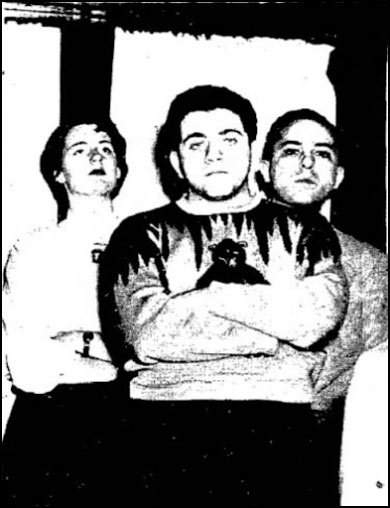
A 1951 case, which the Supreme Court later effectively overturned, illustrates this general pattern. In Feiner v. New York, the majority opinion allowed a heckler’s veto, over spirited dissents by liberal Justices Black and Douglas. Irving Feiner, “a young college student,” was speaking at an open-air meeting in Syracuse, New York on behalf of “The Young Progressives” organization, to “a crowd of about seventy-five or eighty people, both Negro and white.” The Court’s majority opined that one of Feiner’s statements triggered hostile demonstrators’ disruption and hence (assertedly) justified police officers’ demand that he cease speaking. According to the majority, Feiner “gave the impression that he was endeavoring to arouse the Negro people against the whites” when he said that black people “don't have equal rights, and they should rise up in arms and fight for them.” As Justice Black noted in dissent, this ruling meant that, “as a practical matter, minority speakers can be silenced in any city.”
On today’s campuses, the hecklers are often following in Irving Feiner’s footsteps, insofar as they espouse progressive causes and castigate the denial of equal rights to black Americans. Yet too many of today’s progressive students also follow in the footsteps of Feiner’s hecklers and censors, insofar as they seek to stifle views of which they disapprove. And too often campus officials follow in the footsteps of the officials who facilitated the silencing of Feiner: They fail to punish the hecklers and to protect the speakers and audience members. Paraphrasing Justice Black, today’s hecklers’ vetoes “can silence[]” speakers espousing “minority” views “in any [campus community].” Indeed, heckler’s vetoes recently have been deployed against liberal speakers on campus by conservative protesters, as well as against conservative speakers by liberal protesters.
The historic record of heckler’s vetoes, and their continued power to suppress marginalized voices and views, should give pause to anyone who might be tempted to defend this tactic as potentially promoting any progressive cause.
Recent Articles
FIRE’s award-winning Newsdesk covers the free speech news you need to stay informed.
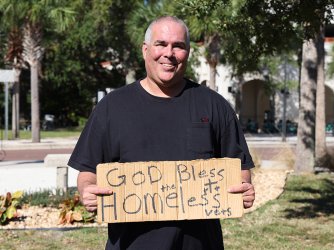
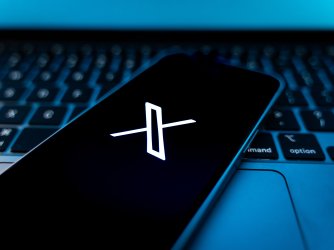
FIRE Statement: X Corp's lawsuit and Texas's investigation into Media Matters for America are deeply misguided

Anonymous speech is as American as apple pie
